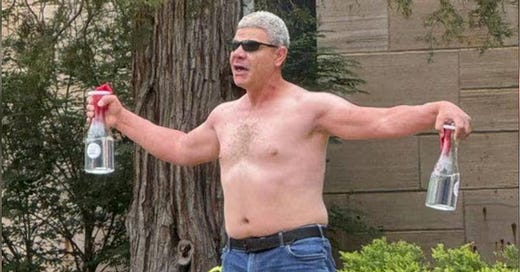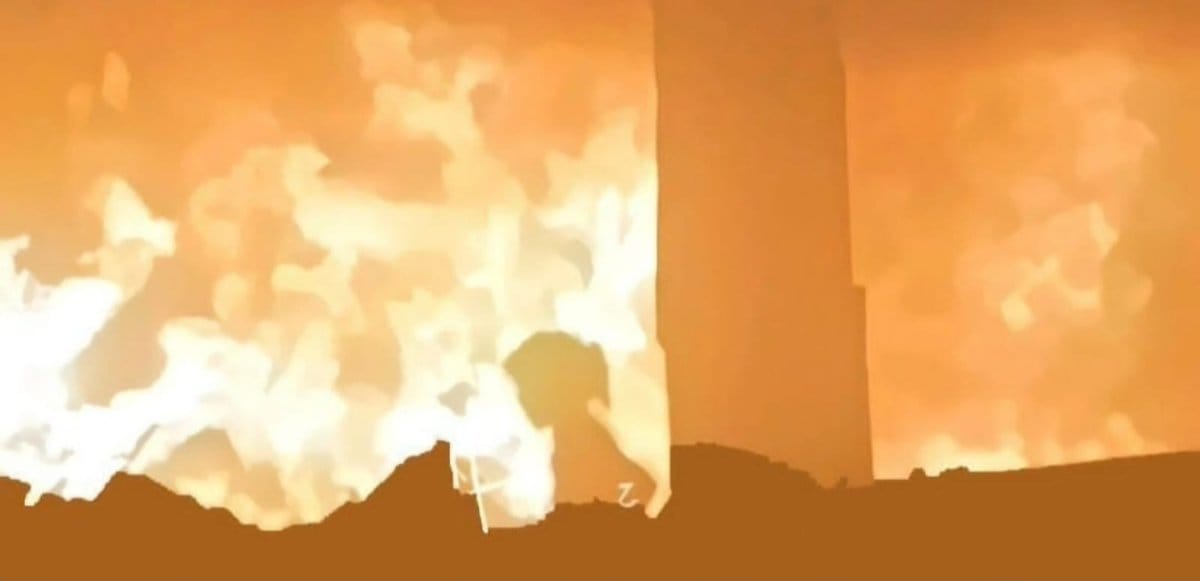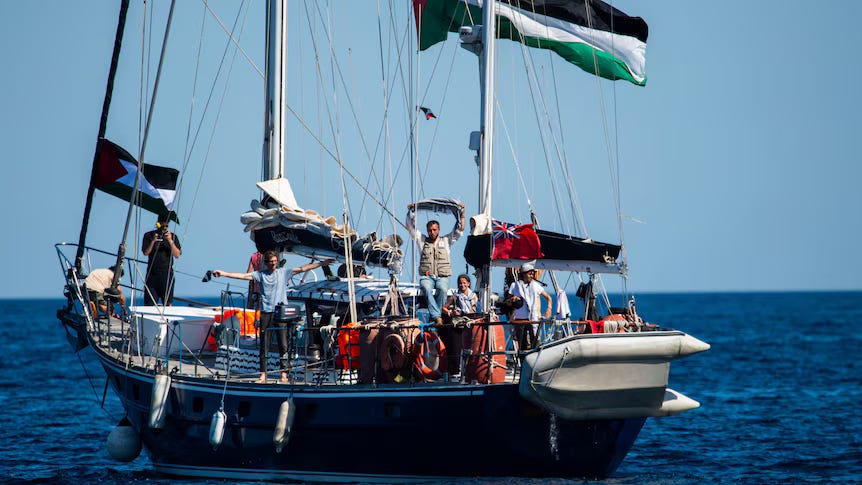What is a Sane Response to Live-Streamed Genocide?
Understanding the political violence of the past two weeks
On Monday June 1st, Mohamed Sabry Soliman attacked pro-Israel demonstrators with molotov cocktails in Boulder, Colorado, injuring eight people. Eleven days prior, Elias Rodriguez shot and killed two Israeli embassy staffers, Yaron Lischinsky and Sarah Milgrim, outside an American Jewish Committee event in Washington D.C.
The media narrative following the D.C. shooting fixated on antisemitism and the reporting on the attack in Boulder seems to be following the same formula thus far—with the additional wrinkle that Soliman is an Egyptian immigrant whose B2 visa expired in 2023, catalyzing a deluge of xenophobic remarks. Despite the immediate consensus that antisemitism is the primary factor worth considering in both cases, I am left with some questions about what to make of Rodriguez’s and Soliman’s actions.
If pathological hatred for Jews is not the driving force behind these violent acts, then what is? How do we grapple with individualized political violence and what do these acts tell us about the Palestine movement?
The Boulder Attack
A video captures the scene in Boulder after Soliman hurled molotov cocktails at a Run for Their Lives event. Alarmed demonstrators scramble to treat burn injuries while a shirtless man holding two bottles shouts from a distance: “How many children you killed?” “End Zionists” and “Free Palestine.” Then the police show up and detain him.
In custody, Soliman allegedly told federal investigators that he wanted to “kill all Zionist people.” He also said “this had nothing to do with the Jewish community and was specific in the Zionist group supporting the killings of people on his land.” He has been charged with a federal hate crime and his family was detained by ICE.
Mohamed Sabry Soliman targeted a local chapter of Run for Their Lives, which organizes weekly global events supporting the release of 58 remaining Israeli hostages in Gaza–about 20 of whom are believed to be alive. At these demonstrations, protestors walk, wave Israeli flags, speak the names of hostages, and sing the Israeli national anthem. Run for Their Lives claims to be apolitical, an assertion echoed by much of the initial reporting on the attack. However, a truly “apolitical” group committed to the release of hostages might be compelled to mention the 10,000 Palestinian prisoners in Israel, roughly one third of whom were abducted and held indefinitely without charge–which Run for Their Lives fails to do.
So was it antisemitic? Soliman did not leave behind a manifesto and as of now, all that we know about his motives are who he targeted and what he said. It is conceivable that in his hatred for “all Zionist people,” Soliman imagines a shadowy cabal of Jews or any number of antisemitic tropes, that he considers all Jews to be Zionists, or even that his disdain for Israel is rooted in its self-proclaimed Jewish character as opposed to its genocidal policies.
But as stark and vitriolic as confessing a desire to “kill all Zionist people” is, that statement alone is not necessarily antisemitic. It’s worth mentioning that in the U.S., there are over 30 million Christian Zionists and roughly 7.5 million Jews, many of whom are not Zionists. It’s also worth mentioning that Run for Their Lives explicitly welcomes non-Jews to join their protests. This was a senseless act, but the line between an antisemitic hate crime and individualized political violence is once again blurred.
Regardless of his precise motive, throwing molotov cocktails at a crowd of mostly elderly demonstrators, and confessing to the FBI a desire to “kill all Zionist people” is not a particularly sane reaction to genocide.
Which begs the question: What is a sane response to 19 months of live-streamed genocide?
What is a sane response to genocide?
People have responded to the genocide in Gaza in a variety of ways: becoming entrenched in Zionist ideology; deepening political education about Palestine; ceaselessly posting on social media; engaging in hard conversations with loved ones; in-fighting over semantics; marching, phone-banking, canvassing, and base building; doxing strangers; organizing direct actions; writing and art-making; committing acts of political violence.
There are certain responses that I would argue are more strategic, more productive, more humane, but I am starting to question if anything is sane.
While I am a proponent of the ability for strategic and collective organizing to bring about positive and radical change, this belief has certainly been tested these past 19 months. All of the flyering and mass mobilizations and wheatpasting and marching and door-knocking and political education workshops and mutual aid organizing and university encampments and BDS proposals and weapons manufacturer lockdowns and ceasefire resolutions and congressional arms embargo votes and op-eds have not stopped this genocide. If there was a glimmer of hope that the prior U.S. federal administration could be pressured into alignment through these tactics, that light is surely extinguished.
My takeaway is not that ‘nothing is worth doing,’ and there is still enormous value in laying the groundwork for a movement that may one day succeed. But that day is not on the immediate horizon. To borrow Albert Einstein’s definition of insanity - “doing the same thing over and over again and expecting different results” - at times, believing that the next march or next phone banking session will make an impact can feel insane.
Meanwhile, Israel manages to reach new levels of brutality. On Sunday, June 1st, Israel massacred dozens of starving Palestinians in Gaza who had been waiting at a food distribution location designated by Israeli officials. On May 29th, Israel approved the biggest West Bank land grab in decades. That same week, an image circulated of five-year-old Palestinian child Ward Khalil, escaping a building that had been struck by Israeli drones, killing her mother and five siblings.
We are witnessing atrocities beyond reason. It is one thing to intellectually understand the violence of settler-colonialism, but it is another to watch it unfold for 19 months with no serious intervention from any world government (other than Yemen). And it is not only the scale of violence, but also the rhetoric shrouding it–the absurd claims of self-defense and eternal victimhood.
This concoction of 1) unfettered brutality in Gaza, 2) rhetorical gaslighting by Israel, and 3) futility of movement tactics, is an incendiary recipe. When the well-trodden paths of political change are fenced off, and outrage becomes bottled up, it explodes in horrific ways. When the purveyors of genocide fail to even feign responsiveness to the demands of the Palestine solidarity movement, we get the “taking matters into their own hands” moments from the past few weeks.
It’s easy to dismiss these individuals as insane and these acts as unproductive, but it is critical that we consider why they happen. This attempt at understanding need not be a justification. For anybody who read that Soliman wants to “kill all the Zionists” and thought well that’s not what the movement is about, we are now enlisted in the task of re-defining precisely what the movement is about, and how it will meet the stakes of the moment.
Just as individualized political violence of this kind is not a sane response to the genocide, neither is pursuing the fenced-in path of the past 19 months and expecting different results.
I remain hopeful in a handful of escalatory strategies in these times, summed up by Omar Aziz in a recent Mondoweiss article:
“If one aid ship can set sail towards Gaza—like the Freedom Flotilla’s Conscience before being bombed by an Israeli drone—why not a thousand?
If one Israeli arms factory can be shut down in the West through direct action, why not all of them?
If hundreds of thousands of protestors march in London and across the globe–why not lay down permanent occupations?
If trade unions declare solidarity, where are the widespread strikes?”
One month after Israeli drones bombed the Freedom Flotilla’s Conscience, another ship departed from Sicily to break the siege in Gaza. On June 1st, the Madleen set sail carrying urgently needed supplies to the people of Gaza, including food, sanitary products and medical supplies. Greta Thunberg, one of 12 people on this trip, said:
“We are seeing a systematic starvation of 2 million people. The world cannot be silent bystanders, Every single one of us has a moral obligation to do everything we can to fight for a free Palestine.”
At the time of writing, the Freedom Flotilla is en route to Gaza, an inspiring beacon of courage and moral clarity for us to model. There is much work to be done to cultivate Aziz’s vision of a thousand boats setting sail to Gaza. For this movement to flourish on a mass scale, we each have a role tending our own gardens. And until it blossoms, vigilante violence is a weed that will fester.
You can subscribe for free to be notified when I share new writing.
If you’re able to financially support my work, paid subscriptions allow me to spend more hours writing! Free subscriptions and sharing with friends is also helpful and I am appreciative of each and every one of you.







